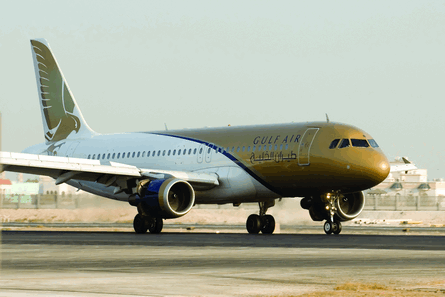Gulf Air chairman Talal Al-Zain has a clear ambition: to re-capture the brand that the Bahrain-based carrier has created over the past 58 years. "We were the preferred carrier in the region and we are going to re-capture that. We have the people for this task. The new team is fully geared to one goal: make the carrier successful," he says. "My ultimate wish is to become the preferred employer in the Gulf countries and the company that Bahrainis are proud of."
The airline's chief strategy officer, Tero Taskila, agrees: "We want to be back at the front. Customers remember us as the pioneer of the Middle East and we want to be remembered that way in the future." Gulf Air has posted some hefty losses in recent years, including a $227 million net loss and a $320 operating loss in 2006. But Al-Zain is hopeful that the carrier can return to profitability within three years.
 |
|---|
Gulf Air has abandoned its strategy of becoming a regional carrier |
The last time Gulf Air rebranded itself was in 2004. But this time the carrier is in a more interesting phase. It has unveiled a fleet-modernisation plan, which includes 59 new Airbus and Boeing aircraft, as part of its restructuring efforts. Gulf Air ordered 15 A320s for its narrowbody needs, and for its medium- and long-haul requirements it placed its faith in the 787 with firm orders for 16 aircraft and eight options, which were converted last month. The carrier also ordered 20 A330s in May and will use them as interim aircraft.
Gulf Air's efforts are being carried out in conjunction with the government of Bahrain, which launched its "Business Friendly Bahrain" campaign early this year. The Emirate is upgrading its services, particularly in the information technology and manufacturing industries, and is attracting international companies.
Taskila says Gulf Air needs to service the needs of that growth. To achieve this, it has launched its "Way forward" campaign. "It consists of two elements: restructuring the airline and becoming the airline of choice," explains Taskila. The new management team has made its focus more global, rather than concentrating on the Gulf region. "The previous management wanted to transform the airline into a regional carrier. However, our network is our strength and we seek to strengthen it. We don't want to concentrate only on the Gulf region," says Taskila.
NEW ROUTES
In 2008, Gulf Air has consolidated its presence in some key destinations in Europe and the sub-continent. It has also opened new routes to Shanghai and Hyderabad. The airline serves 43 destinations, which it aims to increase to 60 by 2013. By then Qatar Airways and Etihad Airways will operate about 120 destinations while Emirates will be way beyond.
 |
|---|
"We don't want to concentrate only on the Gulf region"Tero TaskilaChief strategy officer, Gulf Air |
Gulf Air's strategy, rather than opting for volume, is to grow more in the 3-8hr segment. "The sectors below three hours are the focus of the low-cost carriers in the region while sectors beyond eight hours are high capacity and long-haul aircraft. Currently, airlines serving these markets are rushing to Australia and the US market and we have no intention to follow them," says Taskila.
Since the start of the year, Gulf Air has put a lot of emphasis on its hub. It has worked internally to improve its connection system and the optimisation of its network, and it is now beginning to reap the benefits. Last month the carrier announced its best performance in its 58-year history. Over the summer, it enjoyed its highest revenue and load factors on record and attained a 12% year-on-year increase in yield and a 16% increase in revenue per available seat kilometre.
Taskila believes there is more room for improvement. Central to Gulf Air's strategy is Bahrain's close geographical and cultural links to the region's biggest economy, Saudi Arabia. Taskila says six million people live within 45 minutes of Bahrain Airport. The planned construction of a causeway road to Qatar will further increase Gulf Air's catchment area by another 1.5 million in 2012. "We are in a fortunate situation of having the biggest local catchment area, and when you consider that the Indian sub-continent has a 300 million middle class population, it makes sense to reposition our economy and premium products."
At its main hub, Gulf Air has a "10-30-15" plan with three targets. The 10-minute target refers to passengers getting from the car park to the aircraft with a checked bag, while 30 minutes is the maximum time Gulf Air aims to offer passengers on connecting flights at Bahrain. The 15-minute target refers to getting from the aircraft to the car park.
"This is all about selling time to customers," says Taskila. "We have a unique proposition because our airport is not big, unlike our competitors. It is like having a London City airport with long-haul connections." Adds Al-Zain: "We want to become the airline of choice."
To read what Gulf Air chief executive Bjorn Naf had to say on the carrier's expansion plan: flightglobal.com/expansion
Source: Airline Business



















